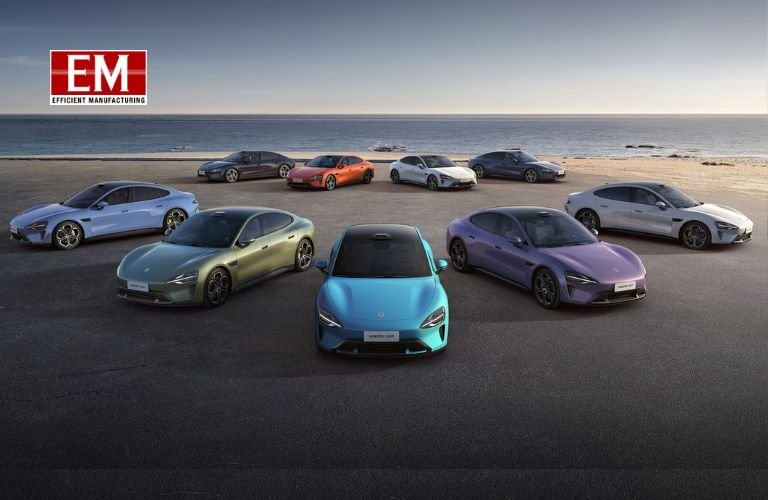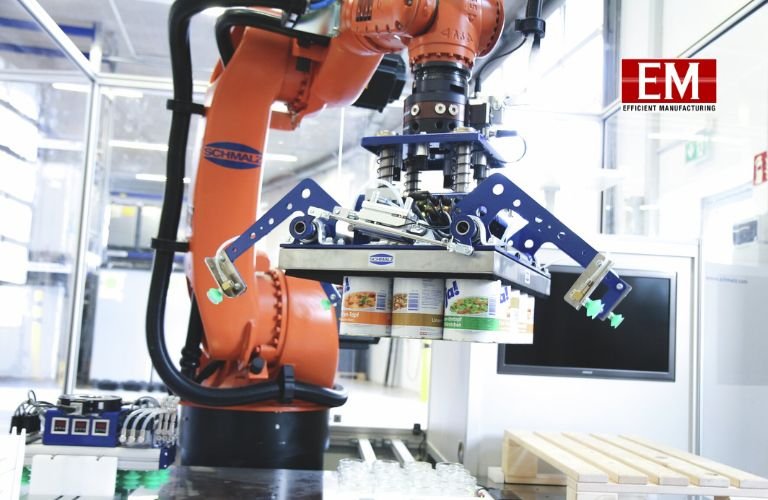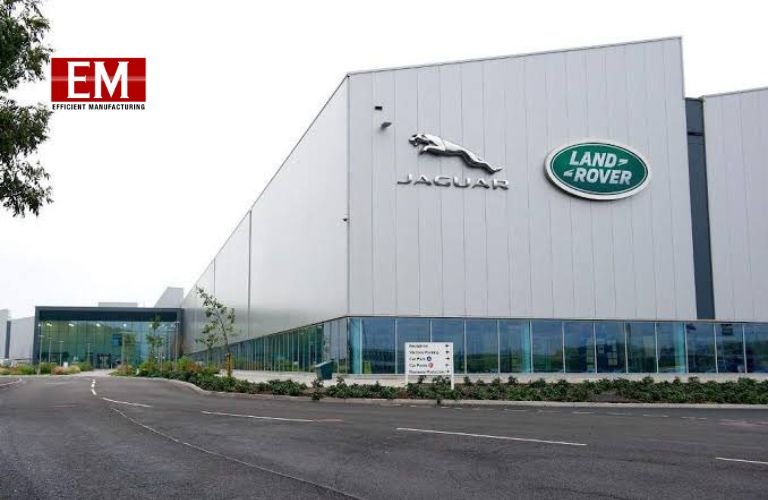| Imagine a city where electric air taxis silently buzz the skies above crowded streets while travellers soar in sleek, autonomous planes. Imagine living in a world where regional air travel is as easy as scheduling a rideshare and cargo drones seamlessly deliver packages right to your home. Advanced Air Mobility (AAM), a breakthrough idea, is bringing this vision closer to reality.
There will be a day when air travel is quick, silent, and environmentally benign, while ground transport is not restricted by traffic bottlenecks. The ability of AAM to transform cargo delivery as well as passenger travel is a major draw. The potential for quick, on-demand delivery services could change supply chains and improve accessibility in remote and difficult-to-reach areas for logistics. Equally interesting are the technological developments behind AAM. Electric propulsion, battery efficiency, and autonomous systems innovations are coming together to make aircraft that are not only practical but also scalable for mass production.
The implications of AAM go beyond transportation as we approach the dawn of this airborne revolution. It signifies a paradigm shift towards a world that is more efficient, connected, and ecologically aware. This piece examines the essential elements of advanced air mobility, the innovations in technology, legal issues, and societal effects that will influence aviation in the future.
Comprehending Advanced Air Mobility (AAM):
Advanced Air Mobility (AAM) is an innovative concept that seeks to revolutionise transport by combining state-of-the-art aviation technologies to transport people and products more effectively and responsibly. Using electric power, Vertical Take-Off and Landing (VTOL) capabilities, and autonomous navigation systems, AAM envisions a new era of air travel that will provide quicker, safer, and greener options than current ground and aviation travel. The primary components of AAM include:
- electric Vertical Take-off and Landing (eVTOL) Aircraft: These are powered by electric motors and can take off and land vertically, much like helicopters. Compared to conventional helicopters, eVTOL aircraft are intended to be more silent, efficient, and ecologically benign.
- Urban Air Mobility (UAM): UAM is the term for the provision of air transportation services inside urban areas using eVTOL and other aircraft. This includes cargo transport services, air ambulances, and air taxis, all of which try to reduce traffic on the ground and offer quicker modes of transportation.
- Regional Air Mobility (RAM): RAM connects cities and rural areas that are now underserved by traditional aviation services, whereas UAM concentrates on urban areas. RAM also expands the concept to regional travel. RAM seeks to offer medium-distance travel solutions that are quicker and more effective.
- Autonomous and Semi-Autonomous Systems: By allowing aeroplanes to function with little assistance from humans, autonomous technologies are essential to AAM. These systems provide more flexible and effective flying operations, lower operating costs, and improve safety.
Technological Innovations Powering AAM:
Several technological advancements that are stretching the bounds of conventional aviation are essential to the emergence and possible success of Advanced Air Mobility (AAM). These developments, which range from electric propulsion systems to Human-Machine Interfaces (HMI), are laying the groundwork for a new era in air travel.
- Electric Propulsion Systems: Many AAM vehicles are powered by an electric propulsion system. In contrast to conventional aeroplane engines that run on fossil fuels, electric motors are emission-free, more efficient, and quieter. This not only makes them eco-friendly, but it also makes them appropriate for use in crowded cities where noise pollution is a major issue. Developments in electrical engineering and materials science have pushed the creation of electric propulsion systems, leading to the development of dependable, strong, and lightweight motors.
- Autonomous Flight System: The core idea of the AAM is autonomy. By utilising cutting-edge sensors, sophisticated machine learning algorithms, and strong communication networks, many aircraft are being built with little need for human participation. Without direct human direction, these autonomous technologies allow AAM vehicles to safely navigate intricate urban areas, avoiding obstacles and controlling air traffic. Fully autonomous air taxis, like those being developed by Wisk and Volocopter, may ultimately provide on-demand services like those of existing ride-sharing systems, improving accessibility and efficiency.
- Battery Technology: The development of batteries has a direct bearing on whether electric aeroplanes are feasible. In order to supply the power and range required for eVTOL operations, high-energy-density batteries are essential. The success of AAM depends on advancements in solid-state batteries, lithium-ion batteries, and other energy storage technologies. These developments make eVTOLs more realistic for regular usage by increasing their overall efficiency, reducing charging periods, and extending their operational range.
- Communication and Navigation Systems: It takes reliable navigation and communication systems to operate AAM vehicles safely and effectively. These systems guarantee that planes may speak to one another, to ground control, and to other components of the air traffic control system. Accurate tracking and coordination of AAM vehicles are made possible by developments in real-time data processing, 5G telecommunications, and satellite navigation, which improve operating efficiency and safety. The autonomous capabilities of AAM are supported by this technological infrastructure, enabling a smooth incorporation into the current airspace.
- Unique and Aerodynamic Design: Due to their unique architecture, which frequently consists of numerous rotors and wings, eVTOLs are more flexible in urban settings. Vertical takeoffs and landings are made possible by these designs, which are crucial for gaining access to crowded metropolitan locations where conventional runways are impractical. In addition, modern manufacturing processes and materials, like composite materials and 3D printing, help make these aircraft strong and lightweight. These aerodynamic designs are combined with reliable electric power technologies to improve the performance and dependability of AAM vehicles.
- Human-Machine Interface: Even if a lot of AAM vehicles are made to run autonomously, human supervision and involvement are still crucial. Sophisticated HMIs are being developed to facilitate smooth communication between autonomous systems and human operators. These interfaces, which improve situational awareness and allow efficient management of AAM operations, include user-friendly control systems, real-time data displays, and decision-support tools. The capabilities of HMI are further improved by the integration of AI and machine learning, which enables intelligent and adaptive reactions to changing operational conditions.
Economic Potential and Market Opportunities:
Advanced Air Mobility (AAM) has enormous economic ramifications since it can open up new markets and spur substantial expansion in the transportation and aerospace industries. A Morgan Stanley study indicates that by 2040, the urban air mobility sector may have a valuation of $1.5 trillion. Numerous reasons are responsible for this increase.
The best places to start implementing AAM services are cities. For commuters, the opportunity to avoid traffic jams and shorten travel times presents a strong value proposition. Like modern ride-sharing services, air taxis might run on set routes or on demand. The ease of use and effectiveness of air taxis have the potential to revolutionise urban transportation by decreasing the need for personal vehicles and alleviating traffic congestion.
AAM has the potential to transform regional travel in addition to urban areas. When it comes to connecting places that are too close for conventional air travel but too far for practical land transit, eVTOLs and other cutting-edge aircraft can offer rapid and effective transportation. Greater regional connection and economic development may result from this, providing smaller cities and villages with new economic opportunities.
Case Studies and Pilot Projects:
Through pilot projects and case studies, several cities and businesses are already investigating and putting AAM ideas into practice. For example;
- Volocopter: Based in Germany, Volocopter has created several electric vertical take-off and landing vehicles and has successfully shown them in air in places like Singapore and Dubai. A complete UAM ecosystem with vertiports, air traffic control systems, and passenger services are all part of Volocopter’s goal.
- Joby Aviation: This start-up company based in California is developing an eVTOL aircraft for use in urban air taxi services. In order to progress its technology and carry out flight testing, the business has obtained significant financial and regulatory assistance. It intends to begin commercial operations soon.
- EHang: A Chinese pioneer in Autonomous Aerial Vehicle (AAV) technology is testing passenger and cargo drones. The company’s goal is to build Urban Air Mobility (UAM) networks and logistics solutions through collaborations with various towns and organisations, including AAVs into urban transportation for novel passenger travel and cargo delivery.
Regulatory Challenges and Infrastructure Development:
Although there is great promise for Advanced Air Mobility (AAM), there are important infrastructure and regulatory issues that need to be resolved. It is difficult to integrate many new aeroplanes into the current airspace. Frameworks are being developed by regulatory agencies like the Federal Aviation Administration (FAA) and the European Union Aviation Safety Agency (EASA) to guarantee the safe coexistence of conventional aircraft and AAM vehicles. This calls for upgraded communication and collision avoidance systems, dedicated flight lanes, and new air traffic control systems.
The airworthiness of AAM vehicles is validated through stringent testing and certification, with safety being of utmost importance. New certification criteria are being created for eVTOLs, with a focus on software and control system dependability given the autonomous character of many AAM vehicles.
New infrastructure, such as vertiports, charging stations, and maintenance facilities, is required for the widespread use of AAM. To find appropriate vertiport locations and incorporate them into the larger transportation network, urban planners and transportation authorities must work together.
Equal benefit distribution and public acceptance are essential. To win over the public’s trust, issues with noise pollution, privacy, and safety must be addressed. Preventing exclusivity requires making sure AAM services are available and reasonably priced for a large portion of the population. To create inclusive plans that optimise the societal advantages of AAM, policymakers and industry leaders need to collaborate.
Conclusion:
Advanced Air Mobility is a revolutionary development in aviation that can completely change urban living, revolutionise transportation, and open up new business opportunities. Although there are still many obstacles to overcome in the areas of infrastructure, public acceptance, and legislation.
The emergence of eVTOLs and other cutting-edge aircraft marks a new age in mobility that promises to be more rapid, efficient, and clean. The imagined future of precise package delivery by cargo drones, seamless regional travel via ridesharing, and air taxis whisking commuters above city streets is no longer a fantasy but an attainable reality.
In order to achieve this vision, cooperation between technologists, regulators, urban planners, and the general public is necessary. The promise of Advanced Air Mobility (AAM) encourages us to envision and work towards a world where the skies are not only a frontier to be crossed but a domain to be fully utilised for the benefit of all, as we stand on the edge of this exciting new chapter in aviation.
Industry Quotes:
“Many technological advancements are driving the development of advanced air mobility, including autonomous vertical takeoff and landing (VTOL) aircraft. I would say that the systems simulation approach is the most significant of them, as it gives engineers the freedom to design, test, and validate VTOL aircraft virtually, ensuring safety, reliability, and efficiency without the limitations that come with physical testing.
Simulation tools allow detailed modelling across various aspects of VTOL design. For example, Fluent helps understand the fluid dynamics key to smoother vertical and horizontal flights. Sensor simulations are vital for navigation and object detection. They are performed using Speos for optical sensors, and HFSS for radar systems, and they ensure that VTOL aircraft can handle various operational scenarios/environments. Also, TwinBuilder allows the formation of integrated systems simulations by merging the aircraft’s physical dynamics with control logic developed in SCADE. Functional safety is also a critical aspect of autonomous operations, and it can be assessed using Medini analysis. This makes it possible for an aircraft to operate safely, even in complex and unexpected situations.
Engineers can now test the passenger experience and ensure comfort, addressing potential issues before deployment using virtual reality simulations with VRXPERIENCE. This not only cuts the need for extensive physical prototypes and accelerates development but also significantly enhances the overall safety and reliability of advanced air mobility solutions, instilling a sense of confidence about the future of this technology.
Therefore, advanced simulation tools make it possible to overcome challenges in communications, sensor integration, safety analysis, and material design. This versatility drives the successful development and deployment of autonomous VTOL aircraft in various applications, from urban mobility to infrastructure inspection.”
Atul Borkar, Head- Aerospace & Defense, Ansys
“A breakthrough in aircraft design for Advanced Air Mobility (AAM) has emerged, combining novel manufacturing techniques with cutting-edge materials to make aircraft development and production faster, cheaper, and more efficient. One example is 3D printing, also known as additive manufacturing. This method does not require a block of material or a mould to create physical items; instead, it stacks and fuses layers of material, allowing for the creation of complex components with perfect precision. This reduces waste and time compared to previous methods. The industry now utilises materials like carbon fibre-reinforced plastics, which exhibit high strength-to-weight ratios and structural integrity. This makes aeroplanes more fuel-efficient and durable than those made with conventional materials. Additionally, AI-based navigation systems significantly enhance the navigation of these vehicles. These systems collect data from various sensors, such as GPS, LiDAR, radar, cameras, and inertial navigation systems, and run sensor fusion algorithms for path planning and obstacle avoidance in dynamic environments. This ensures unbiased and risk-free flights, even in complex environments like urban canyons or areas without GPS, where traditional navigation systems may struggle.
These systems continuously monitor and update situational awareness, recognising potential hazards such as topographical obstacles, other aircraft, or restricted airspace. Real-time data processing enables autonomous decision-making, allowing AAM vehicles to dynamically adjust flight paths to avoid collisions and ensure safety. These algorithms constantly evaluate telemetry data and sensor readings, detecting anomalies and predicting future component failures to ensure the aircraft’s reliability and airworthiness.”
Rishabh Choudhary, Co-founder and Director, BharatRohan- Agri-Tech Drone Startup
“In the quest to constantly push the limits of advanced air mobility, key technical breakthroughs have been made including, electric propulsion systems that have allowed for futuristic development and provide matchless efficiency, reduced emission levels and almost noiseless operation. In addition, these significant technological advancements in lightweight, high-strength materials have played an important role in facilitating long flight ranges and higher payload capacities. Autonomy has also been a major catalyst for innovation within the AAM sector, as AI algorithms can assimilate immense data from sensors to enable instantaneous decision-making, evasion of obstacles and navigation assistance. Autonomy has also increased the safety and dependability of AAM systems and has created new modes of operations and businesses, focusing on safety above all else. Some of these technological innovations have spurred the growth of the AAM industry, resulting in efficient and sustainable air transport systems that are capable of mitigating congestion, reducing carbon emissions and enhancing connectivity at large. Through these innovations, advanced air mobility will become more widespread, and shape a future where it is an integral part of life.”
Mr. Pavan Ranga, CEO, Rangsons Aerospace
“Significant technological advancements have played a crucial role in the development of Urban Air Mobility (UAM), contributing to its safety, reliability, and efficiency. The progress in AI and autonomy is paving the way for autonomous operation of UAM vehicles such as Varuna, the nation’s first indigenously built Personal Aerial Vehicle that is a testament to the capability of such systems being able to handle emergency situations as Air Ambulances and by providing logistical support in remote areas, aligned with the roadmap towards “Make in India, Make for the World”.
Varuna has been developed with the goal and vision of bringing up a new life in urban air mobility by leveraging cutting-edge vertical take-off and landing (VTOL) and electric propulsion technologies. Its core mission is to revolutionise everyday transportation by making UAM systems more practical and accessible. The indigenously developed autonomous navigation system along with its capability of heavy lifting, is designed to carry significant payloads and operate in harsh environments that provide critical support like delivering food, medicine and evacuating individuals in need of urgent medical care. By integrating advanced sensors and safety features such as a ballistic parachute, it makes Urban Air Mobility today, unlike all traditional vehicles, crucial as aerial taxis for emergency medical evacuations to save time and human lives. To ensure the utmost safety and reliability, Varuna has redundant navigational sensors and a sophisticated command control unit. By seamlessly integrating data from various sensors through advanced data fusion techniques, Varuna achieves unparalleled accuracy in navigation, collision avoidance, and precision landing. This comprehensive approach not only enhances safety but also enables Varuna to operate with efficiency and readiness, ready to meet the demands of critical support missions with precision and reliability.”
Capt Nikunj Parashar, Founder, Sagar Defence Engineering
“As with any budding industry, a holistic approach is essential. Each component is crucial for aircraft like eVTOLs to fly safely, the heart of it lies in battery technology – Lithium-ion batteries and even metal-air batteries, in the coming years will help make Urban Air Mobility (UAM) accessible. The electric propulsion technology can be deemed as the brain of the aircraft. They are quieter, help in enhancing accuracy in manoeuvrability and are far more environmentally sustainable than combustion engines. Improvisations in carbon composite manufacturing have helped make aircraft lighter in weight, without having to compromise in payload-carrying capacities or structural integrity of the aircraft.
The development of semi-autonomous and autonomous systems that leverage AI and Machine Learning (ML) for better navigation through urban environments, obstacle detection and avoidance, are key to ensuring the safety of passengers and the environment. Paired with advanced sensor systems like lidar and radar, and the budding communication tech, building autonomous systems shall lead to a reduced need for human intervention and pilot training in the long run.
Going forward, to make this ecosystem whole, take-off & landing infrastructure, charging infrastructure and most importantly, compliance with the regulatory bodies shall ensure reliability and efficacy of these new birds of the flock. India has made strides on this front with the Drone Rules of 2021, establishing the drone flying permit zones through Digital Sky and now, framing policies for certifying air taxis for commercialisation as global regulatory bodies like the EASA and FAA.”
Prof Satya, Founder and CEO, The ePlane Company








